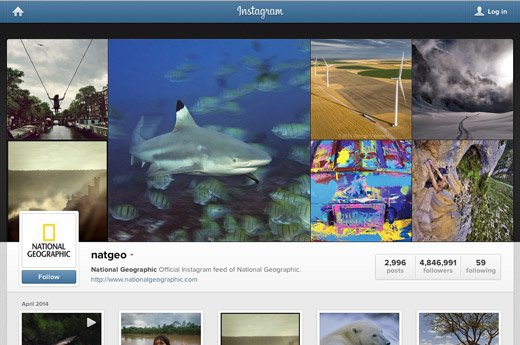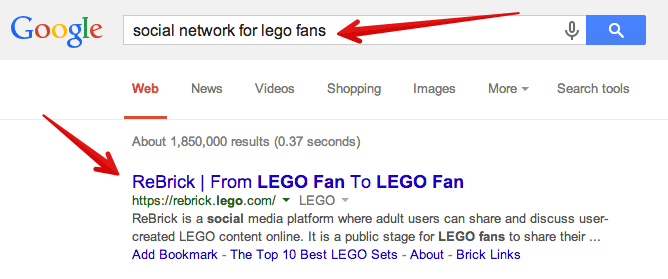
Social media is critical. I doubt anyone would argue with me about that. But social media is also misunderstood in some ways. One of those misunderstandings is which social media sites a business or individual should be on.
If you read this article, you’re going to understand which social media sites are best for your brand or business.
You won’t have to waste your time messing around on social media sites that have no ROI, and you even might do better at gaining leads on the social media sites that are perfect for your business.
A Quick Look at the Social Media Landscape
Social media isn’t a fad or trend. It’s an enduring reality of online existence. For marketers, it’s indispensable. But when you approach social media as a marketing channel, things may get a bit confusing.
Here’s why.
Social media marketing includes a myriad of potential social media sites, a vast array of ways to engage, and a medley of styles for each platform.
It’s more than just Facebook. You need to figure out which of the legion networks to join. Then, you need to determine optimal messages, posting frequency, cost of social media management, integration with other marketing channels, and how to make the most of the billions of people who are purportedly hanging out on social media.
To slice through the confusion, here are four questions that you should answer.
1. Where Is My Audience?
The primary question to ask about social media is where your audience is actually spending time. What social media outlets are they on?
A caveat is in order: just because you have followers doesn’t mean that you have an audience.
In January 2019, a report claimed as many as 50% of Facebook’s accounts were fake. Simply having a bunch of followers doesn’t guarantee that you have a human audience.
If you buy followers, you are almost assuredly bought fake accounts. While these fake accounts might be great for follower numbers, they don’t do much for your actual marketing. (Which is why I recommend deleting fake followers.)
2. Where Is My Audience Active?
Big social media numbers don’t mean big activity.
For example, there are nearly 3 billion accounts, but only 1.73 billion are daily active users. Twitter, too, has a lot of members with a relatively low number of active members. Of the site’s 330 million signups, only 145 million are daily active users.
A social media user needs to be active on a social media site to be of any use to you.
There’s a disparity between overall members on a site and the number of active members.
3. Where Is My Audience Searching?
As I’ve discussed before, people use social media for searching, not only socializing.
Every minute, people are conducting millions of queries on Instagram, Twitter, and Facebook. If you are active on these social media platforms, you can appear in social media search results.
4. What Niche Social Media Sites Are Right for Me?
Some businesses are missing out on a deluge of warm leads, because they are absent from niche social media sites.
Someone might tell you, “OMG! You have to join this social media site! We get all our leads from it!”
Okay, that’s great. But that doesn’t mean that your business needs to be there.
What kind of business do they have? If they are a boutique silk scarf seller and found a social media site for silk scarf aficionados, then they’ve obviously found the right social media site.
But if you’re a SaaS business, chances are you won’t gain as many warm leads from silk scarf social media sites.
I’ve provided these four questions as a framework for determining your social media strategy. Don’t join randomly. Instead, choose intentionally by answering the four questions.
- Where is my audience?
- Where is my audience active?
- Where is my audience searching?
- What niche social media sites are right for me?
With that in mind, let me explain the social media accounts that truly matter.
Join the Big Three Social Media Sites
At this stage in social media, there are three sites that reign supreme. These sites are crucial, regardless of your audience, your business model, and your strategy. Join them.
Facebook has over 2.7 billion monthly active users, the largest of any social network. In the past decade, it has become a fixture of the daily online experience. Nearly half of all Facebook users are active each day, and they spend half an hour or more on the site.
These users aren’t only browsing profile updates or viewing photos.
Each Facebook user is connected to dozens of pages, groups, or events. That’s where you come in — your marketing efforts and Facebook presence.
Twitter is a happening place. There are more than 330 million Twitter monthly active users, and 100 million users are active at least once a day. Plus, there are more than 460,000 new accounts created every day.
Twitter is less of a lead generator than other platforms like Facebook. But it is an incredibly powerful search engine and news source. Many businesses also use Twitter to provide customer service.
Every second, two new people join LinkedIn. Now, with more than 706+ million users, LinkedIn is a force to be reckoned with.
According to Search Engine Journal, marketers love Twitter and Facebook. They leave out LinkedIn. But here’s the deal. LinkedIn is the platform for B2B marketing, not B2C marketing.
LinkedIn proudly touts its user base of professionals. Many of those professionals are connected with companies. These companies could benefit from the extra marketing love. Don’t neglect LinkedIn, especially if you’re in B2C.
Those are the big three. Whatever you’re selling, doing, being, or saying, these are the three social media accounts you need to keep active.
Consider the Lesser Three Social Media Sites
These are called “the lesser three” (my term) only because they’re not part of the big three. These social media sites are huge, and I strongly encourage you to be present on them as well as the big three.
Early in its life, Pinterest got labeled as a social platform for women. At first, that was true. But now, women account for about half of Pinterest pinners, which isn’t much different from the gender slant on other social media sites. Pinterest is a place to be for any gender, any company, and any brand.
And the site is growing fast. The business generates more than $400 million a quarter and has 335 million monthly active users.
I’ve found that Instagram is a powerful way to promote both one’s personal brand and a business, too. Despite my not-so-often posting, I discovered that liking and commenting on other photos is a powerful way to grow a massive following.

Instagram is a visual platform. We already know that pictures get 5x higher engagement on Twitter, and photos make up 93% of the most engaging Facebook posts. With Instagram, it’s all photos and videos. That kind of visceral appeal is one of the reasons for Instagram’s massive popularity. Throw video into the mix, and you’ve got a social media channel that is basically addicting. Visual content in social media is electric.
Some social media marketers have argued that Instagram only serves the purposes of image-heavy brand content for companies like National Geographic. Sure, National Geographic’s Instagram channel is killer, and they have a strong 4.8 million followers.

However, I would argue that Instagram is effective for nearly any type of business. I’ve seen successful fitness coaches, booksellers, conference speakers, coders, video game designers, SEO companies, and accountants make a dent in the Instagram universe.
YouTube
YouTube has the distinguished position of being the second largest search engine in the world. Considering that Bing and Yahoo have been vying (unsuccessfully) for that position, that’s no small feat. YouTube did it without even trying.
Despite their modest pretensions to massive search, YouTube is a hit when it comes to video watching. Obviously. In fact, YouTube reaches more U.S. adults than any cable network.
Some brands lend themselves to video virality more than others, but any brand can be successful at video marketing. A video doesn’t have to be expensive or fancy to be effective in brand promotion. It needs to be on YouTube.
Check Out Two of the Little Social Media Sites
My word “little” needs a bit of a disclaimer. These social media sites are massive. However, as social media marketing platforms, their benefit comes in their niche sub-communities for people of shared interest.
On Facebook, you might socialize with people you went to school with — friends from past and present. On Tumblr, however, you might interact with people who share your interest in, say, aerial photography drones.
In that sense, your audience might be smaller but more focused.
Tumblr
Even though it’s technically a “blogging platform,” Tumblr has enjoyed meteoric growth in its young life.

In 2013, Tumblr was raking in monthly pageviews that soared over 5 billion. With smart posting (i.e., great content) and consistency, many marketers have discovered that Tumblr is an ideal place to impact one’s niche. Some marketers actually host their company blog on Tumblr. (This is something which I don’t recommend for SEO purposes).
Reddit is a news site, basically. But as a social media news site, it has an appeal that goes beyond mere “headlines.” These headlines are voted up and virally shared.

Maybe a dog saying “Hiiiii!” isn’t quite as meaningful as business news or government decision-making. But still, Reddit is a marketing channel that might work for some companies. Of all the social media sites, Reddit has the highest percentage of news-readers — 62%, according to Pew researchers.
To use Reddit effectively, the secret is creating engagement on subreddits and communities packed with people who are passionate about what you are. This is your target community. Then, you create relevant headlines and promotions to create an uptick in your stories.
Want to learn more about marketing on Reddit? Here’s a quick rundown:
Find One Niche Social Media Site
Last, explore the niche social media landscape. You might discover that it’s an absolute waste of time, and there is zero ROI. Or, on the other hand, you might find a world of untapped potential and dozens of warm leads. It’s worth doing some exploring.
Here’s are a few sorta-popular niche sites. Forget the millions of followers and fans. Here, it’s all about a targeted audience:
- Untappd – Beer lovers
- Behance – Creative professionals
- Care2 – Green lifestyle
- GoodReads – People who love reading
- Ravelry – Knitters and crocheters
- Gentlemint – Pinterest for dudes
The best way to find your niche social site is to google it. You will find something.

Conclusion
The social media scene can be bewildering. But if you follow this plan, you’re going to see a higher social media marketing ROI:
- Must: Join the Big Three: Facebook, Twitter, LinkedIn
- Should: Consider the Lesser Three: Pinterest, Instagram, YouTube
- Could: Check out Two of the Little Ones: Tumblr, Reddit
- Possibly: Find One Niche Site
As you engage in social media, you’ll discover the social nuances of your own niche. It will look different for every business, region, target audience, and personal style.
What social media sites have you discovered to be useful for your business?
The post Which Social Media Sites Really Matter and Why appeared first on Neil Patel.




Recent Comments